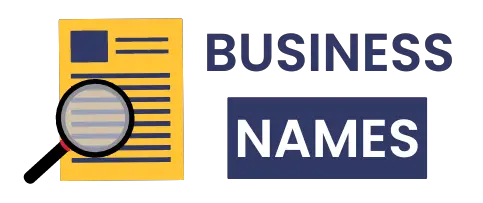Sarah made $12,000 last quarter teaching online courses while working her 9-to-5 job. While most people struggle with high paying side hustles that barely cover gas money, Sarah discovered something different: certain skills can generate serious income surprisingly fast.
The difference isn’t luck or special connections—it’s choosing the right skills that businesses desperately need right now.
Instead of driving for rideshare companies or selling crafts online, smart professionals are focusing on digital skills that command premium rates. In the next 6 months, you could realistically build a $10,000+ side income by mastering just one of these eight in-demand abilities.
📈 The Digital Skills Market Explosion
(Last 3 Years)
Skilled Freelancers
⚖️ Skills vs Hours: The Income Difference
❌ Hourly Jobs
✅ Skill-Based Services
🎯 8 Skills Companies Will Pay $10k+ For
🗓️ Your Path to $10k Monthly Income
💰 Real People, Real Income
🌍 The Freelance Economy Boom
🚀 Ready to Start?
Skill #1: How to Make $5,000 Monthly With AI Prompt Engineering (No Tech Degree Required)
Companies are throwing money at a problem you can solve in weeks. They have AI tools but don’t know how to use them well. That’s where you come in.
What Is AI Prompt Engineering?

You write the right words to make AI tools work better. Think of it like being a translator between humans and machines.
When someone types “write me a blog post” into ChatGPT, they get garbage. When you write “Create a 500-word blog post about email marketing for small business owners. Use a friendly tone. Include 3 actionable tips. End with a call-to-action for a free consultation,” you get gold.
You do this for ChatGPT, Claude, Midjourney, and other AI tools. Companies pay you because good prompts save them hours and make their content way better.
Why Companies Need This Now
Every business wants to use AI. Most are failing at it. Their chatbots give bad answers. Their AI content sounds robotic. Their image generators create weird pictures.
They know AI can help them. They just don’t know how to talk to it properly. That’s your opportunity.
How Fast Can You Learn This?
Basic prompt engineering takes 2-3 weeks if you practice daily. Advanced techniques need about 2 months. You can start making money after the first month.
You don’t need coding skills. You need to understand how AI thinks and what makes it produce better results.
Real Money Examples
A marketing agency pays $3,200 monthly for someone to optimize their AI prompts. The work takes 10 hours per week.
One freelancer charges $1,500 for a “customer service chatbot prompt library.” This includes 50 tested prompts that handle common questions.
Hourly rates range from $50-$150. Part-time workers easily make $2,000-$5,000 monthly.
How to Start Today
Take an online course in AI prompt engineering. Practice with free AI tools for 30 minutes daily. Build a portfolio of before-and-after examples.
Start with small projects on freelance sites. Offer to improve someone’s chatbot responses for $100. Show them the difference good prompts make.
As you get better, target bigger clients. Marketing agencies, customer service companies, and content creators need this skill most.
The best part? You can monetize skills quickly. While others spend years learning to code, you can start earning in weeks by mastering the art of talking to AI.
Skill #2: TikTok/Instagram Content Creation ($1,500-$8,000/month)

Why Most People Get This Wrong
You think social media content creation means posting dance videos or food pics. Wrong. The real money comes from creating content for businesses who need help but don’t know how to make engaging posts.
What This Actually Means
This isn’t about your personal Instagram account. You’re becoming a content creator for companies. They pay you to make videos, write captions, and manage their social media presence.
Think of yourself as their marketing team. But cheaper and more effective.
The Niches That Pay Big Money
Not all industries pay the same. Here’s where you want to focus:
B2B companies pay $3,000-$6,000 monthly because they struggle with social media. They know they need it but have no clue how to make it work.
Real estate agents will pay $2,500 monthly for property showcase videos. They make $10,000+ per sale, so your fee is nothing to them.
Finance and health companies pay premium rates because their content needs to be perfect. One wrong post could hurt their reputation.
How You Actually Make Money
You have three ways to earn from this social media side hustle:
- Content creation: $500-$2,000 per month per client
- Strategy consulting: $100-$200 per hour
- Ad management: 10-20% of their ad spend
Most successful creators do all three for their clients.
Time Investment Reality Check
You can earn $3,000+ monthly working just 10-15 hours per week. Here’s the breakdown:
- 2 hours planning content
- 6 hours creating videos/posts
- 2 hours responding to comments
- 4 hours client communication
One B2B company pays $4,000 monthly for LinkedIn content that takes 12 hours per week to create.
How to Land Your First Client in 30 Days
Start by creating sample content for businesses you want to work with. Make 5 posts for a local real estate agent. Show them what you created. Ask if they want you to manage their account.
Most business owners will say yes if you prove you can help them.
Post your work on your own social media with hashtags like “social media side hustle” and “high paying side hustles.” Other businesses will find you.
Your Next Step
Pick one niche. Create sample content for three businesses this week. Reach out and show them what you made. One will hire you.
This beats most side hustles because businesses always need content. And they’ll pay well for quality work.
Skill #3: No-Code App Development – Your Fast Track to $3,000-$10,000 Projects

You know that feeling when a business owner says “I wish I had an app for that”? That’s your cue to cash in.
Most small businesses need simple apps and automation. They don’t want to pay $50,000 for custom coding. They want something that works, costs less, and gets done fast.
That’s where no-code development comes in.
What Is No-Code Development?
You build real apps without writing code. Think digital Lego blocks. You drag, drop, and connect pieces to create working software.
Tools like Bubble let you build full web apps. Webflow creates responsive websites. Zapier connects different apps together. Airtable becomes your database. Put them together, and you can build almost anything a small business needs.
What Businesses Actually Want
Local companies need three main things:
CRM systems that track customers and sales. Booking platforms for appointments and reservations. Simple marketplaces where they can sell products or services.
They also want workflow automation. Things like “when someone fills out this form, send them an email and add them to our mailing list.”
Your Learning Path: 4-6 Weeks to Profit
Week 1-2: Pick one tool and master it. Start with Bubble for apps or Webflow for websites.
Week 3-4: Learn Zapier for automation and Airtable for databases.
Week 5-6: Build your first complete project. Make it work perfectly.
The key? Focus on specific tutorials that show you how to build real projects, not just theory.
Projects That Pay Well
CRM systems: $3,000-$6,000 per project. Businesses track leads and customers.
Booking platforms: $4,000-$8,000. Perfect for gyms, salons, restaurants.
Marketplaces: $5,000-$10,000. Local businesses selling online.
Your Pricing Strategy
Start with per-project pricing. Charge based on complexity, not hours.
Then add monthly maintenance fees. $200-$500 per month for updates and support. This creates steady income.
Real Examples That Paid
A local gym needed a custom booking system. The owner was tired of phone calls and double-bookings. Project cost: $5,500. Monthly maintenance: $300.
A restaurant chain wanted inventory tracking across three locations. Built with Airtable and automated reports. Project cost: $8,200.
Start Here
Pick one tool. Build one simple app. Show it to local businesses. You can monetize skills quickly once you prove what no-code development can do.
The best part? You’re solving real problems that business owners lose sleep over.
Skill #4: Why Email Marketing Could Be Your $6,000/Month Side Hustle

You want a side hustle that actually pays well. Most freelance work pays peanuts. But email marketing is different.
Here’s why smart freelancers choose email marketing: businesses can track every dollar it makes them. When your email sequence brings in $15,000 for a client, they know exactly what you’re worth.
What You’ll Actually Do
Email marketing isn’t just sending newsletters. You’ll build systems that work while you sleep.
Welcome sequences turn new subscribers into buyers. A good sequence can convert 15-20% of people who sign up.
Product launch campaigns create excitement and drive sales. You’ll write 5-7 emails that tell a story and get people to buy.
Re-engagement campaigns win back old customers. These often work better than finding new ones.
The Tools You Need to Master
Start with Klaviyo for e-commerce clients. It connects to their store and tracks what people buy.
Mailchimp works for smaller businesses. Learn its automation features inside and out.
ConvertKit is perfect for coaches and course creators. Master its tagging system.
Don’t try to learn everything at once. Pick one tool and get really good at it first.
Where the Money Is
E-commerce stores need email marketing the most. They see direct sales from every email you send.
SaaS companies pay well for onboarding sequences. New users who complete onboarding stick around longer.
Coaching businesses want nurture sequences that build trust before big sales.
How to Price for Maximum Profit
Forget hourly rates. Smart email marketers charge based on results.
Take 15-20% of the revenue your emails generate. If your sequence makes $15,000 per month, you earn $3,000. Every month.
For setup work, charge $3,000-$5,000 upfront. Then add $1,000-$2,000 monthly for management.
Here’s a real example: One e-commerce client pays $3,000/month because the email sequences I built generate $15,000 monthly. A SaaS company paid $4,500 for onboarding automation plus $1,200/month to manage it.
Why This Works Long-Term
Email marketing freelance work pays more because it makes businesses money. Unlike design or writing, you can prove your value with numbers.
Start with one client. Build their system. Show the results. Then charge more for the next one.
This isn’t just another high paying side hustle. It’s a skill that gets more valuable as you prove what you can do.
Skill #5: How to Make $2,000-$7,000 Per Month With Your Voice

You have a voice. Companies need voices. That’s your opportunity.
The voice-over industry is exploding right now. Podcasts need intro music and narration. Companies create training videos daily. Audiobooks are bigger than ever. Even AI companies pay people to record training data.
What Is Voice-Over Work?
You record your voice for other people’s projects. Simple as that.
You might read a script for a commercial. Or narrate an audiobook. Maybe record training materials for a big company. The work varies, but the skill stays the same.
Why This Market Is Hot Right Now
Content creators need audio everywhere. Businesses make training videos for remote workers. Podcast hosts want professional intros. Authors turn books into audiobooks because people love listening while they drive.
Even tech companies building AI systems pay voice actors to create training data. That’s brand new money that didn’t exist five years ago.
Getting Started Fast
You need basic equipment first. Plan to spend $300-500 on:
- A decent microphone
- Headphones
- Simple recording software
- Sound treatment for your room (even blankets work)
Then build your portfolio. Record sample scripts in different styles. Business voice. Friendly narrator. Commercial energy. You need variety.
Most people land their first client within 30 days. Start with small jobs to build reviews and experience.
The High-Value Niches
Corporate training pays well. Companies need clear, professional voices for employee training modules. These projects pay $150-$300 per finished hour of audio.
Audiobook narration is the big money. A full book can pay $5,000-$15,000. But you need experience first.
Commercial ads pay quickly. Local businesses always need radio spots and online ads.
How Much You Can Really Make
Beginners start around $2,000 per month working part-time. That’s realistic if you’re consistent.
Experienced voice actors hit $7,000+ monthly. Some make six figures yearly, but that takes time and business skills.
Building Your Business
Start on freelance sites to get experience. But don’t stay there forever.
Build relationships with production companies. They have regular clients who need voice work. One good relationship can provide steady income for years.
Create a professional website. Make it easy for clients to hire you directly.
Your voice can pay the bills. You just need to start using it.
Skill #6: Why Remote Teams Pay $2,500 for Better Organization (And How You Can Help Them)

Your team uses 12 different apps. Files are everywhere. No one knows what’s due when. Sound familiar?
This chaos is why companies pay big money for Notion consultants. They need someone to build them a workspace that actually works.
What Is Notion Consulting?
You help businesses organize their work in Notion. Think of it as being a digital organizer for companies.
You create custom workspaces that handle projects, clients, and team tasks. Everything lives in one place instead of scattered across dozens of apps.
Why Companies Pay So Much
Remote work broke how teams stay organized. The old ways don’t work anymore.
Companies lose hours every day looking for files. Projects fall through cracks. Team members work on the wrong things.
A good Notion workspace fixes this mess. That’s why they’ll pay $1,800 to $4,500 per month for your help.
What Services You Provide
You offer three main services:
Workspace setup: Build complete systems from scratch. This includes project management, client tracking, and team communication.
Template creation: Make reusable templates for common tasks. Think meeting notes, project briefs, or client onboarding.
Training: Teach teams how to use their new workspace. Most people need help getting started.
Getting Started Takes 3-4 Weeks
You don’t need years of experience. Spend 3-4 weeks learning Notion’s features and you can start taking clients.
Practice by building workspaces for fake companies. Create a project management system for a marketing agency. Build a client tracker for a coaching business.
Who Pays for This Service
Your best clients are:
- Startups (they grow fast and need systems)
- Remote teams (they struggle with organization)
- Content creators (they juggle many projects)
- Coaches and consultants (they need client management)
Real Examples and Pricing
A marketing agency paid $2,200 for a complete project management system. It tracks clients, deadlines, and team workload.
An online course creator paid $1,500 for a student management workspace. It handles enrollment, progress tracking, and support tickets.
Most complete workspace setups cost $500 to $2,500.
Finding Your First Clients
Search “Notion consultant” and “workspace design freelance” to see what others charge.
Start by offering free workspace audits. Show companies what’s broken in their current setup. Then propose a fix.
The money is real. Remote teams need better organization. You can be the person who helps them get it.
Skill #7: SEO Content Writing ($2,500-$8,000/month)

Why SEO Writing Pays More Than Regular Writing
Regular writers get paid once. SEO writers get paid for results that keep working.
When you write SEO content, clients can track exactly how much money your words make them. More website traffic means more customers. More customers means more revenue. That’s why businesses pay premium rates for writers who understand SEO.
What Makes SEO Writing Different
You need three skills that most writers don’t have:
Keyword research – Finding the exact words people type into Google when they want to buy something.
Search intent – Understanding why someone searches. Are they learning, comparing, or ready to buy?
Technical SEO basics – How to structure content so Google actually finds it.
High-Value Content That Pays Big
Focus on content types that directly make money:
- Pillar pages – Comprehensive guides that rank for competitive keywords
- Conversion-focused landing pages – Pages designed to turn visitors into customers
- Product comparison articles – Content that helps buyers choose between options
These aren’t blog posts about random topics. They’re strategic content pieces that drive sales.
Monthly Retainers vs One-Off Projects
Smart SEO writers build recurring income. Instead of writing one article for $200, you create ongoing content strategies.
A SaaS company might pay you $4,500 monthly to manage their entire content calendar. A law firm might pay $800-$1,500 for each service page that converts visitors into clients.
Monthly retainers give you predictable income. Clients get consistent results.
Pick Your Niche and Own It
Don’t try to write for everyone. Choose 2-3 industries and become the expert.
Learn their problems. Understand their customers. Know their competitors.
When you specialize, you can charge more because you’re not just a writer. You’re a marketing expert who happens to write.
Getting Started
Search for “SEO writing freelance” and “content marketing side hustle” to find opportunities. Start with smaller projects to build your portfolio.
The best part? Every piece of SEO content you create keeps working for months or years. Your writing compounds over time, just like your income.
Turn Your Job Skills Into $3,000-$15,000 Monthly Income
You already know something valuable. The problem? You’re not getting paid for it outside your 9-to-5.
Your current job skills can become your biggest money maker. People pay big money to learn what you already do every day.
What Is Online Course Creation?
You teach what you know. Create a course once, sell it many times. Add coaching for bigger profits.
This isn’t about becoming a guru. It’s about sharing real skills that solve real problems.
3 Ways to Make Money
Course sales: Create once, earn forever. Students buy access to your lessons.
One-on-one coaching: Charge $100-500 per hour for personal help.
Group programs: Teach 10-20 people at once. More students, same time investment.
Where to Host Your Course
Teachable: Easy setup, handles payments. Takes a small cut of sales.
Thinkific: More control, better customization options.
Self-hosted: Use WordPress or similar. Keep 100% of profits but need tech skills.
Start simple. Pick one platform and launch fast.
How to Find Students
Create helpful content: Write posts, make videos about your topic. Show your expertise for free.
Build an email list: Collect emails from people who want your free content. Email them when you launch.
Be consistent: Post weekly. Answer questions. Build trust over time.
Skip paid ads at first. Focus on organic growth.
Your Launch Timeline
Month 1-3: Create your course content. Record videos, write worksheets.
Month 4-6: Launch and get feedback. Fix what doesn’t work. Add what students want.
Most people see real money by month 6.
Real Success Stories
Sarah taught Excel to corporate teams. Her online course now makes $8,500 per month. She works 10 hours a week on it.
Mike was a recruiter for 8 years. Now he runs job search coaching groups. He makes $5,200 monthly helping people find work.
Both started with skills they already had.
Your Next Step
Look at your current job. What do you do that others struggle with? That’s your course idea.
You don’t need to be perfect. You just need to be helpful.
The online course income you want starts with the skills you already have.
Your 90-Day Roadmap to $10k
Pick Your Skill
Choose ONE skill. Research market demand. No guessing – pick what pays.
Learn & Build
2 hours daily learning. Build portfolio. Create something every single day.
First Client
Apply to 5 jobs daily. Help people for free first. Land first paying client.
Scale Up
Raise prices 25%. Get referrals. Focus on ongoing work clients.
Your Income Progression Timeline
“This works if you work it. No shortcuts exist.”
Daily Action Steps That Get Results
Daily Learning
Spend 2 hours every day learning your chosen skill. Take courses, watch videos, read articles.
Build Daily
Create something every single day. Writing? Write 500 words. Design? Make one logo.
Apply Daily
Apply to 5 jobs daily on freelance sites. Write personal messages. Don’t copy and paste.
Network Daily
Join Facebook groups. Help people for free first. Then mention your services naturally.
Winners vs Those Who Quit
What Winners Do
- Pick ONE skill and go deep
- Work 2 hours daily consistently
- Build portfolio from day one
- Apply to jobs every single day
- Help people for free initially
- Raise prices as skills improve
- Focus on ongoing client work
- Ask happy clients for referrals
Why Most People Fail
- Try to learn multiple skills
- Study but never build anything
- Wait until they feel “ready”
- Give up after first rejections
- Never tell anyone what they do
- Undercharge and stay broke
- Only look for one-time projects
- Quit when things get hard
Why This Strategy Works
“Most people fail because they try everything. Winners pick one thing and master it.”
